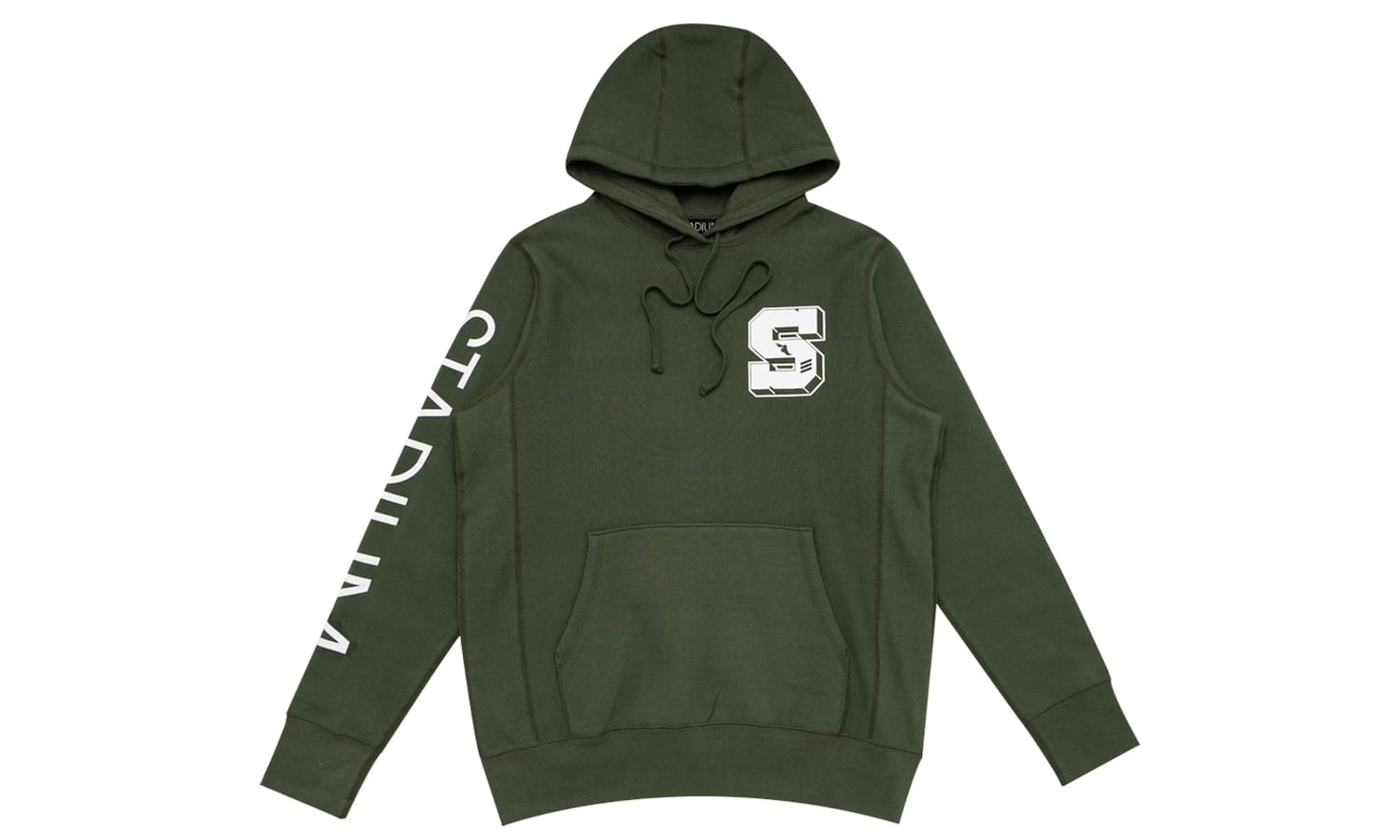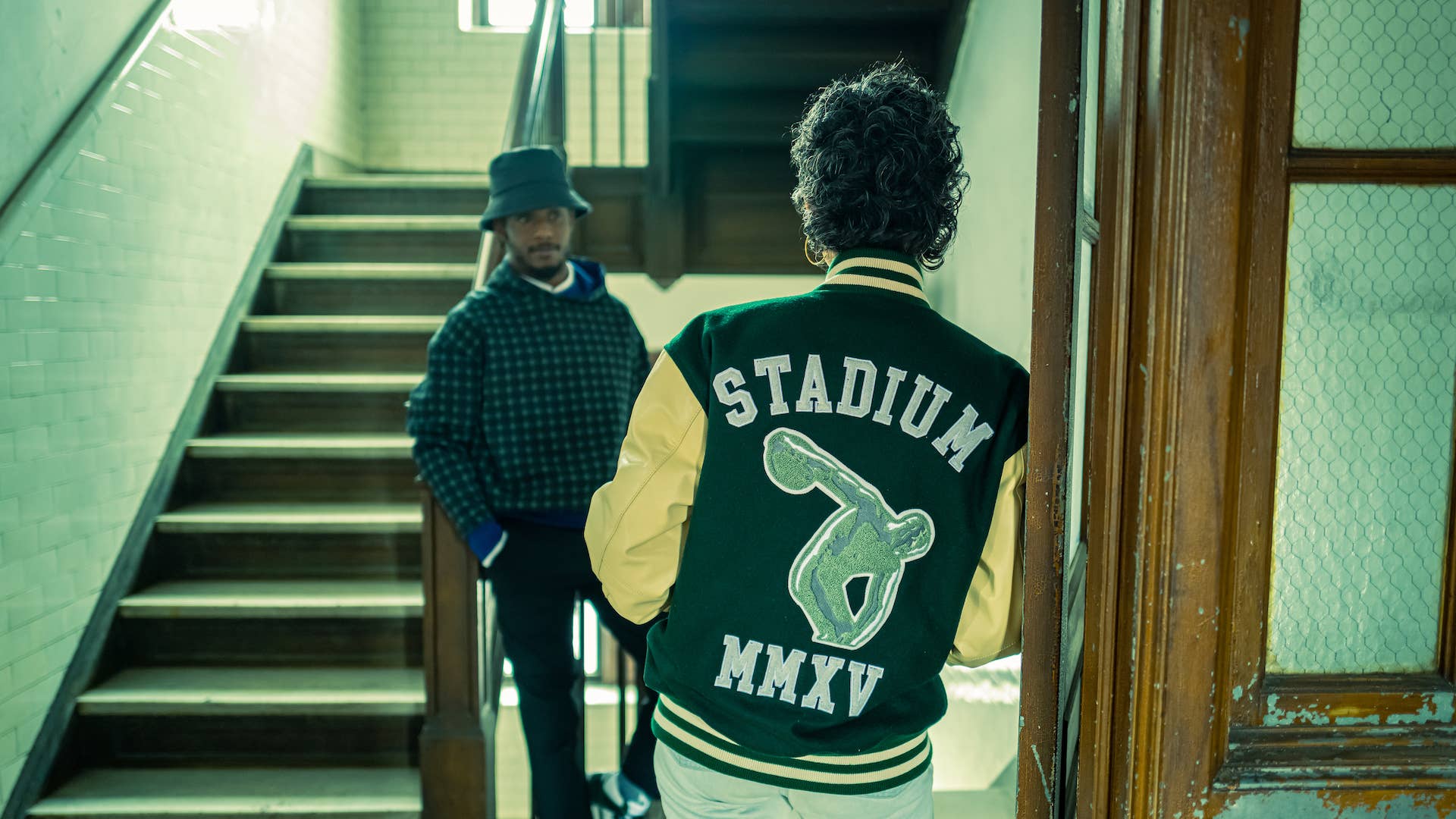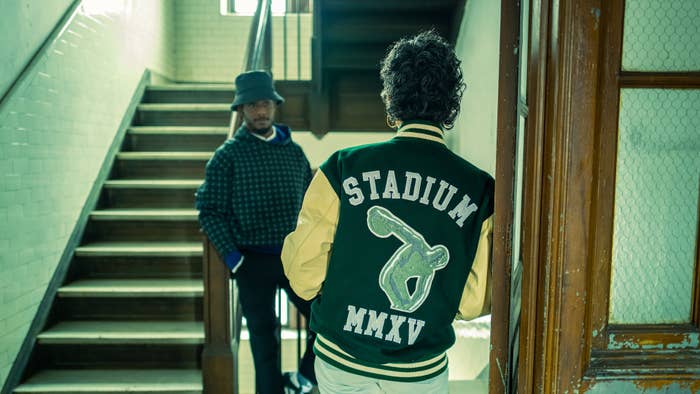
Greig Bennett says he has no idea how Travis Scott recently acquired a pair of bootleg Orchard Street Nike Dunks that he designed nearly 18 years ago. In fact, when Bennett hung pairs of the shoes on street lamps, wires, and traffic lights, he never thought people would shimmy up telephone poles to get the shoes in the first place.
“I just never expected them to come down,” says Bennett, whose brand Orchard Street infamously made 40 pairs of two custom Nike Dunks that could only be acquired by physically finding them on the street. “The mentality of it was, ‘Cool. We’re going to put this shit up there and it’ll be there forever.’ But the shit lasted for like, two days. The craziest thing I saw was a picture of a guy on a fire engine ladder pulling a pair down from some high place.”
Although Orchard Street is a bygone New York City streetwear brand from the 2000s, Bennett is still working within the streetwear space as the vice president of brand creative and head designer at Stadium Goods.This week, Stadium Goods released STADIUM, a new premium in-house brand that is designed and led by Bennett. Stadium Goods’ new sub-label differs from the regular in-house line by offering elevated cut and sew garments crafted out of superior fabrics. The debut 11-piece collection includes rugby sweaters, heavyweight cotton tie-dye hoodies, fleece tracksuits, and standout pieces like a leather varsity jacket with chenille patches. To learn more about STADIUM and the future of the line, we spoke to Bennett about his new collection, his roots within New York City’s streetwear culture, how he got rappers like Jay-Z to wear his clothes in the early 2000s, and more.
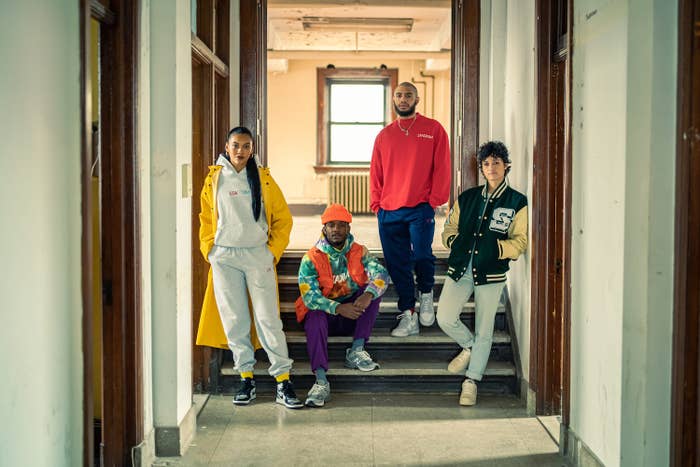
What do you want to bring to the table with STADIUM?
Well I think that Stadium Goods as a brand has a really great reputation. They’re known as the luxury experience for sneakers, right? So with STADIUM, I wanted to match that experience with the apparel. So, when you touch it, when you look at it, when you feel it, it’s on another level. It’s something different than what we were previously offering and what we’re still currently offering. So Stadium Goods already has a line that’s superdope. It has really cool little capsules and drops that tie well with the latest Air Jordan or Air Max or what have you. But STADIUM is just a little different than that.
What were some of the main inspirations for the line?
I think this collection was really meant to be a foundation. If you look at the next two collections, or the next three collections, they move around a bit more. And when I say “move around,” you might see something that’s a bit more thematic or directional. But this first one was the foundation. Like, here are these fly pieces to get you started. Boom, you have this and from here you can build upon it. So I look at it as all being modular in a way. What you buy from me next year, you can wear with what you bought from me last year. And not necessarily that it’s a one-to-one match but it all works together in that way. When you collect clothing and you buy a lot of clothing, you start mixing and matching, putting things together, and understanding how to dress. So, if I’m giving you the direction of where things are going and explaining it, these are your core, foundation pieces that you’re going to get and we’ll continue to build on those. But then, there will be other things that are going to be less or more different.
You’ve been working with Stadium Goods for the past two years now but got a long history in this game, clearly. How did you first get involved with streetwear?
It’s interesting. We were just always into clothing, period. So, when I was young, it was Polo, Guess, Girbaud, Hilfiger, Nautica, all of that real ‘90s vibe. And there was early, early streetwear, where you could buy at Union in ‘94 or ‘95, like Conart and shit like that. I got into that just because I wrote graffiti. For a lot of the stuff in those times it was like characters on shirts or things that were graff-related. So, that’s early streetwear. That’s streetwear at its essence. But yeah, I just always was into clothes. So, it wasn’t really a delineation of what was what. You know what I’m saying?
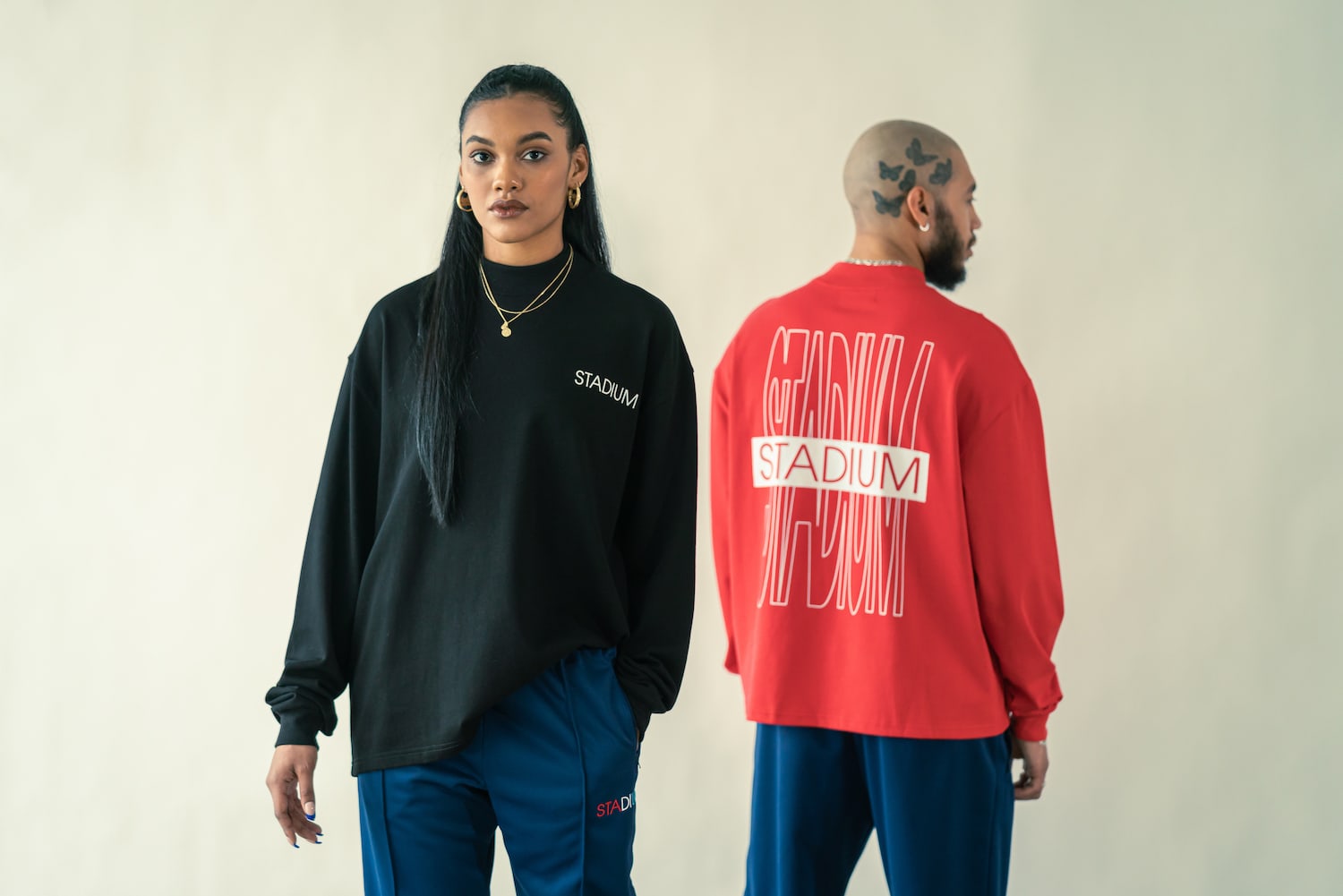
I heard you grew up looking up to Tracy 168. How did your upbringing lead you into streetwear?
I’m from Kingsbridge Road. So yes, Tracy was the OG of my neighborhood. Actually, he’s the OG of graff, period. I’m from Kingsbridge, 197th Street and Bainbridge, so right there. I grew up looking at that shit and at a certain age I got down with Tracy. He threw me a couple styles and the rest is history. Everything that I learned about art and design and color composition comes from graffiti. So yeah, that was definitely one of my entry points. You know, I also read comics and always liked cartoons as a kid. But graffiti was when I started taking things seriously as a teenager. I put in a lot of work on that.
How did your streetwear brand Orchard Street come about?
Orchard Street, this was the early 2000s. There was some activity happening, there were certain brands out there. Alife was very prominent around that time and stores like Nom de Guerre. There was some cool shit. There was just a little movement and a moment and I’d say that was, from my estimation of things, the second wave of streetwear. And just a couple of homies were like, “Yo, we want to do our own thing and make our own stuff.” We were always into sneakers and fly shit. But by then, Polo was getting a little played out for us and we were just like, “Yo, let’s do our own thing.” We made a couple shirts for the heads. And one thing led to another.
It’s funny because those infamous Dunks you guys made resurfaced on Travis Scott’s Instagram. What compelled you guys to make that, your own special Dunk release, back in those days?
I think as a designer, I’d always follow my own path. So, if everyone likes that, I might like this. Or if everyone’s doing that, I’m going to do this. And there was just this moment happening around that time. Supreme had just released the orange and white Dunk Highs with the stars. A couple of years before, the Zoo Yorks came out. So, Dunks were definitely popping and it was just like, “Yo, let’s do our own.” Actually, the color of those Dunks was inspired by a very popular throw-up combination, which is the yellow with the red outline. At least in the ‘90s, that was a very prominent bombing colorway, so to speak. My crew loved yellow and red throw-ups. We loved seeing them and we loved doing them. And the way that it tied to the sneakers was that the whole campaign was like graffiti in a way because we were putting them up on the street.
You also released an orange and green one with a slit in it, right?
Yeah, that was two years later. And at that point, the first one went so crazy that we were like, “How can we take that energy and multiply it?” And then the second one, there was a whole thing with that one and that one went nuts, too.
All the pairs were basically customs. Like pairs of St. John’s hand painted yellow?
That’s correct, that’s exactly what they were. And the other ones were Brazil Highs that you could only get in Europe at the time. My mom actually would go to London every year, a couple of times a year. So, she just went and sourced them for me out of Foot Locker in London.
And you guys only made 40 pairs of each. Right?
Yep.
What was the most ridiculous spot you personally think you put those shoes in?
I think they were all kind of ridiculous. I don’t know, I just never expected them to come down. The idea was, it was an urban marker. It was like, you know when you see someone catch a throw-up way high on a building? And you’re like, “Oh, shit. That’s going to be there forever.” The mentality of it was: “Cool. We’re going to put this shit up there and it’ll be there forever.” So, whenever you’re walking around downtown, by stores like Union or Nom de Guerre, it was supposed to be there. But the shit lasted for like, two days. The craziest thing I saw was a picture, which I have somewhere, of a guy on a fire engine pulling them down. So, that was pretty interesting. You know, the ladder that they use to save people? He was on that, pulling the pair down from some high place.
Did Nike do anything when you guys did that, legally? Or did it just go under their radar for the most part?
Sneakers weren’t like it is now. Obviously, people were excited and there was a small community. But the internet wasn’t what it was then. So this is a story that has grown and gotten bigger over the years because people have heard about it through little rumblings. But no, never heard a word from them.
Do you have any idea how Travis Scott got a pair?
No. Those all left my hands 18 years ago. That’s quite a long time ago, so I have no idea where they’ve been and what the trajectory of those has been. But it was cool, last week, to see mans wearing them.
Speaking of other celebrities that have worn your clothes. Do you know how Jay-Z got that Orchard Street T-shirt for the “Frontin’” video?
It’s a pretty long story but at the time, my girlfriend was a celebrity stylist and she worked with a lot of people and we did a lot of outreach also. Not just through her, but through different channels and homies, we were also involved in music. So we knew A&Rs and people at labels, so getting stuff on people wasn’t really that difficult. And at a certain point, people started coming to us. You know, the street was still in streetwear. It wasn’t really as focused on the internet. So, when you had some shit, people knew and would get in touch with you. There was really this rhythm and energy in streetwear at that time.
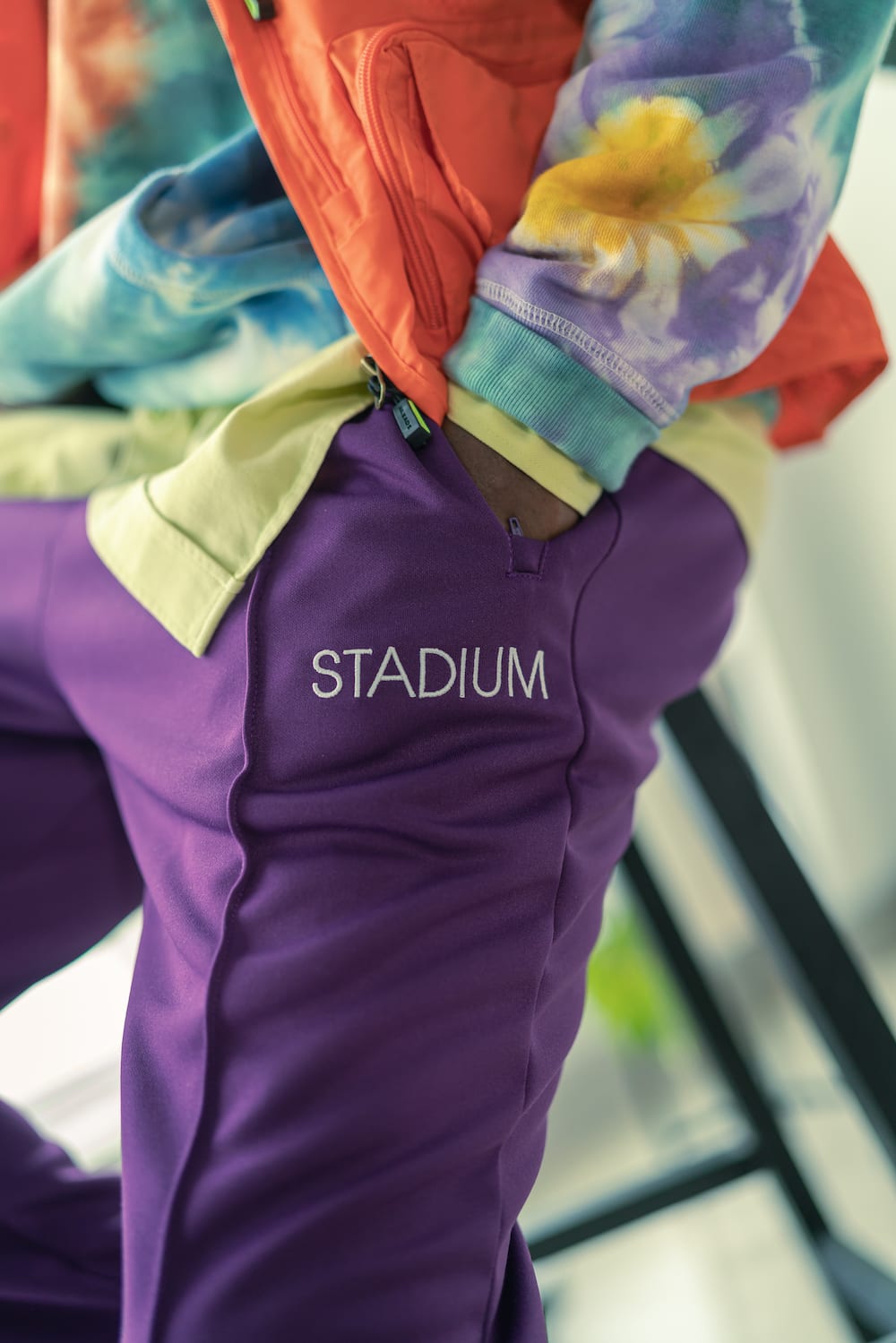
Did anything significant happen to the brand after that moment?
Orchard Street grew to be quite big. We were stocked in a lot of stores and had a massive deal with Reebok. That went for a couple of years and the brand had a great run, it was good.
So at some point you just felt like, “We should just close up shop?”
It was just the economy. When it crashed in 2008, it was really hard to stay in business at that point.
After Orchard, I saw that you went on to design merchandise for artists like ASAP Rocky and Billie Eilish. What was it like working for both those artists?
In 2009, I started the Thread Shop at Sony with Mat Vlasic. He knew what was going on in streetwear and his vision was to really merge music and fashion by turning merch from being a T-shirt business into becoming brands. Doing capsules, collections and things with stores and what have you. So, 2009 was when I got into that merch team and started working with musicians. Billie and Rocky were both great to work with. And those are just two examples of artists that have incredible brands outside of their music. I love working with artists big and small, it’s an interesting thing when you connect with these people because they have so many ideas.
And you were at Bravado too, eventually. Did you happen to handle any merch from Travis Scott?
Yes. So, I was at Bravado later. Obviously, 2009 to now is a long time. But I went to Bravado in 2017, ‘16, ‘17, something like that. And yeah, it was great. I had a great time there working with artists. That’s when I got to connect with Billie. And at that point, I was doing less of the designing and more of the brand management. But yeah, it was great.
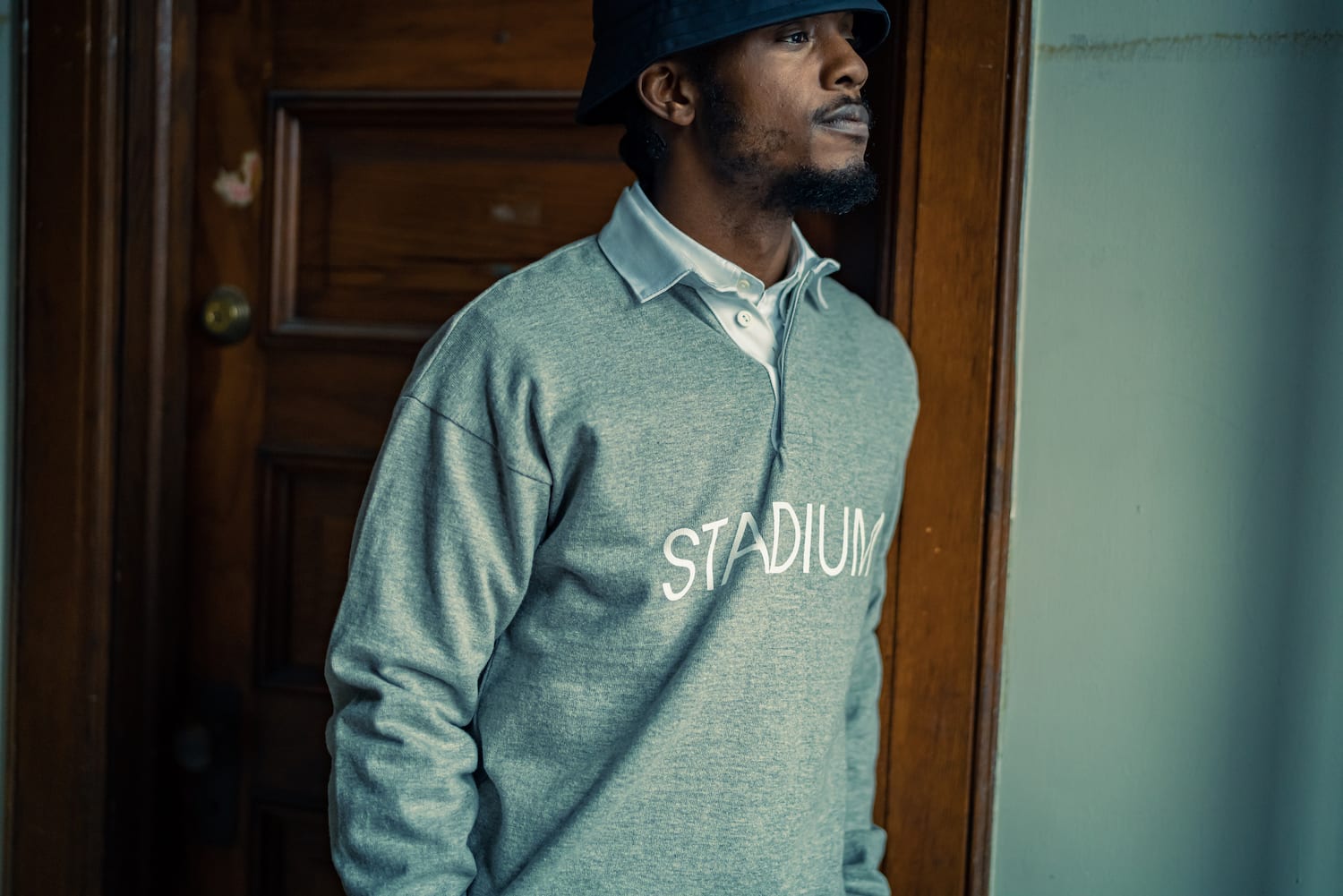
Is STADIUM planning to drop collaborations with other brands, too?
Yeah, most definitely. As I said before, I love working with artists. So, whether they’re musicians, designers, other brands, visual artists, we’re most certainly speaking with some people and are keen to collaborate.
How do you think streetwear has changed since the 2000s? How do you think the game has changed and just the culture in general?
I think It’s grown massively and it’s been cool. It’s a trip to see just where things have come. I remember walking into Supreme three times over two days to buy those Zoo York Dunks and they hadn’t sold out. And when I was about to buy a fourth pair, I was like: “You know what? Let me not OD. Whatever. I’m just going to be cool with this.” It wasn’t quite so crazy, right? And obviously, that craziness is amazing and has made the game grow and flourish, but it’s just different. It’s like anything that has evolved. There are a lot more players in the game, a lot more brands out there, and are a lot of people doing interesting stuff. So, I think streetwear is doing really well and I think there are a lot of brands that are coming up now that are doing really cool things. I think there’s also a really nice moment happening in New York with streetwear brands right now, too. It’s awesome and I’m really happy that it’s still around.
